
There is a club board out on the main road, but the ground is set a fair way behind it.
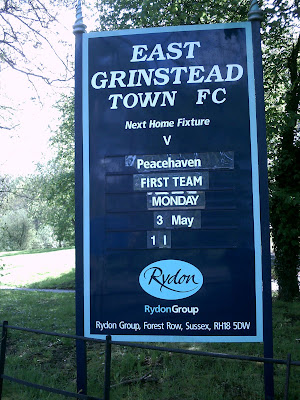
Down a long driveway. Note the sign on the side of that building...

I'm sure it's not as dangerous as it sounds!
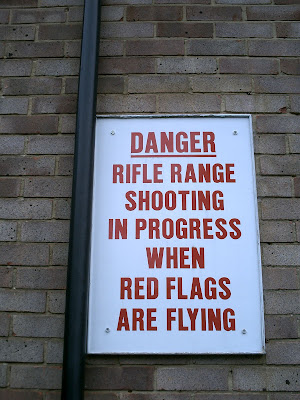
Home of this organisation:

At the end of the drive we finally get to the car park in front of the ground.

Parked in it is the Club minibus.
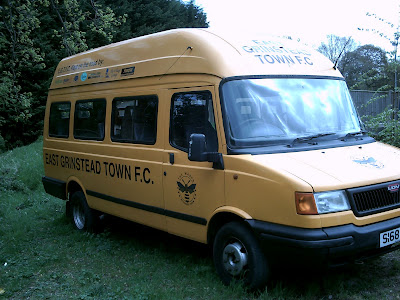
The clubhouse is straight ahead, with the turnstiles to the right.

Well not so much turnstiles, as a club table.

Old sign, old name.
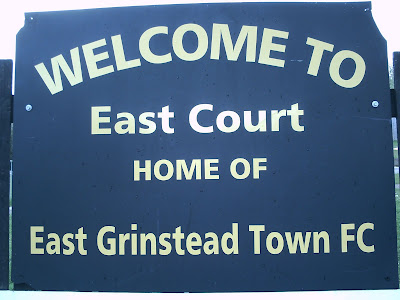
New sign, new name! The GAC brand is everywhere, the major club sponsor.

The entrance is in the corner of the stadium. From inside we look back at it.
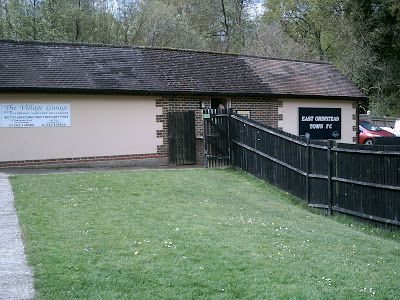
Team line-ups are helpfully displayed.
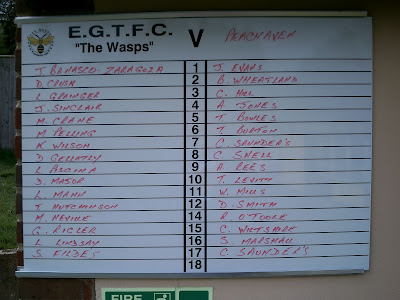
From this corner we see over the pitch.

The side to our right is on a slope. Small covered terrace initially, then main stand past it.
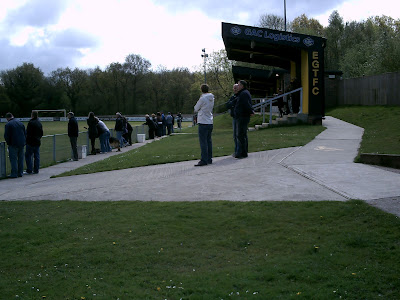
Moving down toward the pitch railings we get a better view of this side, everything smartly painted in the club colurs, but also plastered with the sponsors name & logo.

We're going to head their last. Our walk round will take us behind the goal to the left of the entrance initially. First up is the club house.
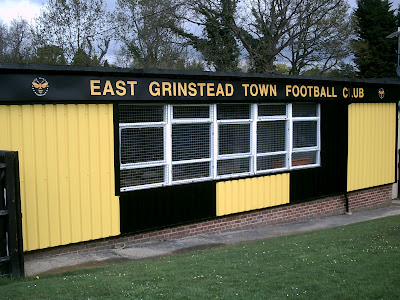
Small but smart.

Lots of club memorabilia on the walls.
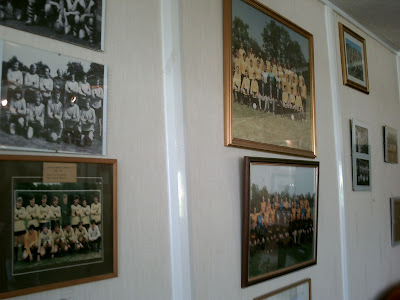
I love it when clubs are proud of their heritage.
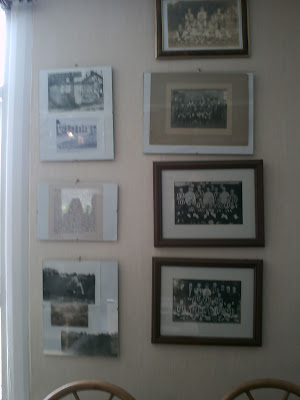
This trophy had an interesting pedigree, but I can't find my old notes where I took details of the inscription & some of the previous winners. Sorry folks!

There was also this cabinet selling an extremely good range of club souvenirs for this level.

Back outside, in front of the clubhouse, pitchside, you can see what I mean about a 'sloped side'.

Behind the goal where we are it's a simple hard standing walkway, the grass behind sloping down to the clubhouse & changing rooms beyond, the railed steps leading down to them.

Here are the changing rooms.

Past the 'open tunnel' is more hard standing to the corner.

Past the goal you can see it is very open down the far side.

The downard banking disappears here, & it become quite narrow in the corner.

A glance back at this end, before we move on round.
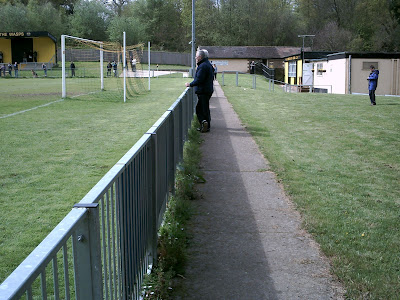
Behind the corner flag we look over to the main stand side.

Slightly to the left of the flag a shot of the end with the buildings, from the other side of the fence.
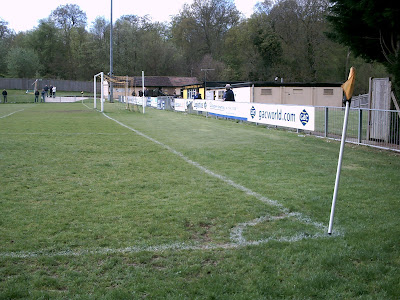
Down this side it's open hard standing all the way.
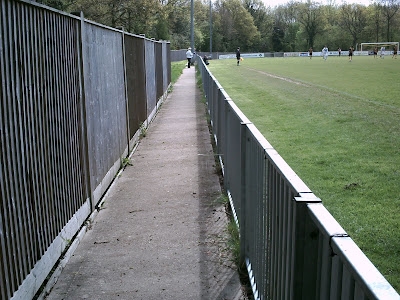
The fencing moves back, if ever this club were in a position to progress up the pyramid there is plenty of scope to develop the ground here.

The stands opposite.

The path goes round the pylons.
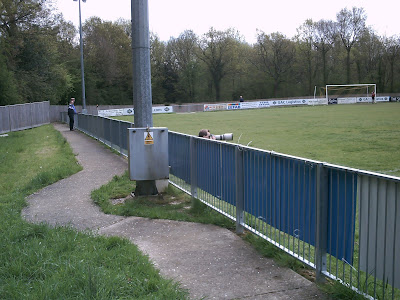
Directly across the halfway line.
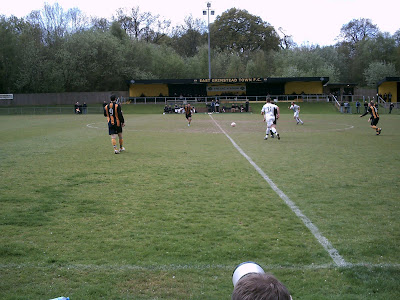
Moving onward, along the hardstanding to the third corner of the ground.

Once again it narrows at the bend.
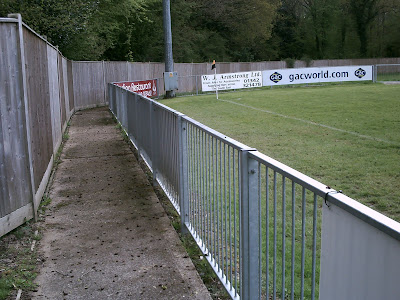
Last glimpse along the open side.

Also open at this end, wider falt grassed area behind.
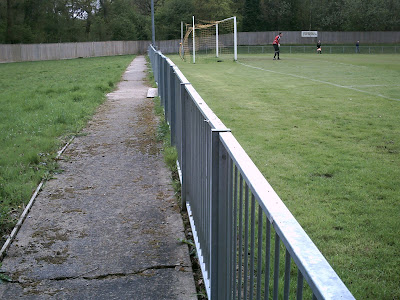
An old roller dumped further behind.

From this end we turn right, for aa full length shot of the open side.

Then leftwards, to the stands one.

Directly down the pitch through the net, typical end of season dry & dusty goalmouth.

Strolling on the path goes on to the last corner, before the built up side.
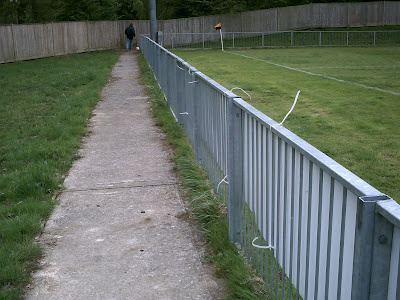
That's where we're heading.

Wer'e getting there!

You can tell this is quite a posh area. There's not much demand for swimming pools on the inner city South London council estates, where I grew up! But having just linked to their website they have gone into liquidation, so there wasn't much demand in deepest Sussex anymore, either! ;-)
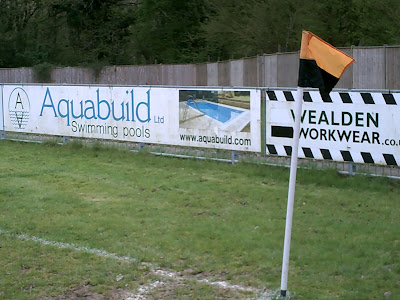
Along the final side of the ground now, the hard standing goes along to the stand, which is atop the grass banking behind it.

Steps lead up to it, with dugouts below it, at the front.

From the steps we look back down to the open end.
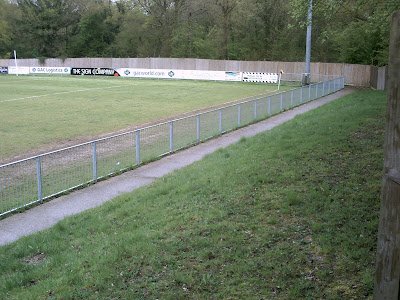
A side view of the dugouts.

Now in the stand, above them, looking across the pitch.
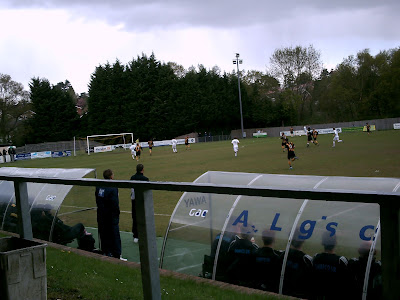
Here they are, after the match.
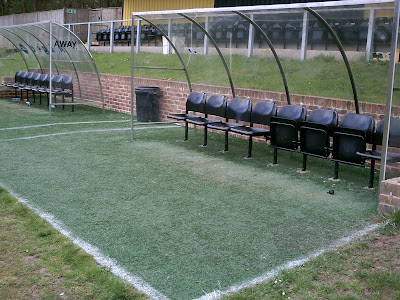
The stand itself is quite narrow, only two rows, but a decent one for this Conuty League, where some clubs in the top division still do not have any at all.

No standing at the front of it, which is fair enough.

Moving along it, there a tea bar at the end of it.

Before we get to the refreshments we see the stand from down on the pitch.

Directly at the centre section.

Close up of the sponsors board in the middle.

Another 'side angle' from further along.

Here we see the brick tea bar, then the start of the covered terrace.
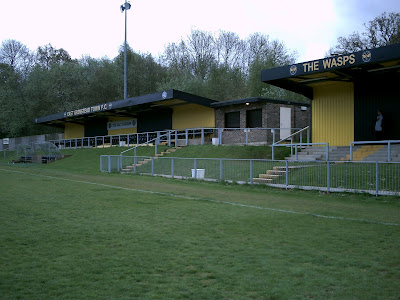
Back up on the stand side of the fence, we are now at the tea bar, terracing past it. There is a dedicated disabled area at the end of the stand here.
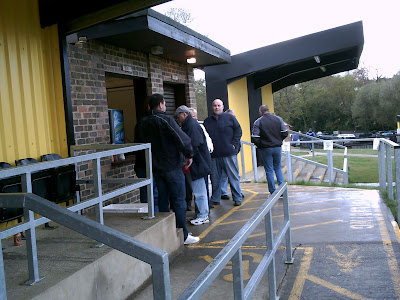
From up here we see the bar & changing rooms, where we started our circuit.

A last look up at the stand, from the front.

Here is the covered terrace, club nickname & crest proudly on the front of it.
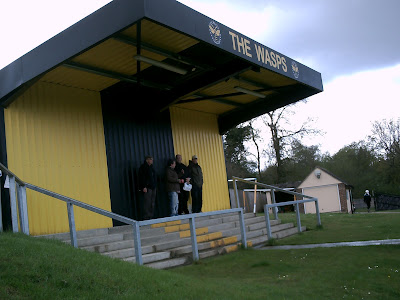
The hard stand path continuing down in front of it.

The terrace from the front.
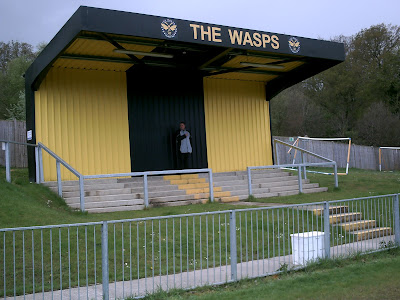
That completes are walk round the place. A lone action shot from the game to finish.


3 comments:
It is my home town ground, so I can add a few extra bits of information that may be of interest.
East Court, as well as the name of the ground before it was sponsored, is an eighteenth century house, now the Town Council offices. You will have walked past it if you approached the ground from the town, although not if you came directly from the station. The house and grounds were bought in 1946 by Alfred Wagg, a local philanthropist, as a memorial to those people of the town who died in the Second World War. The football club (and the neighbouring shooting club) lease part of the land from the company set up to manage the grounds.
The main stand was originally the only cover, with no permanent seats (if I remember correctly, they had a few chairs for anyone who needed or wanted to sit). When the ground grading requirements were revised to include 100 seats and 100 places under cover, seats were placed in the stand, and the small covered terrace added.
The cup you have pictured is the Richards Hospital Cup, also known as the Rose Bowl. The first match to play for the cup was in 1938/9, to raise funds for the town's Queen Victoria Hospital, which had opened 2 years previously, and performed pioneering plastic surgery for burns in the Second World War. Some years the cup was played for against professional clubs, such as Chelsea, Crystal Palace and Brighton & Hove Albion, in other years against local clubs like Haywards Heath, Lewes and Chichester City. Crystal Palace won the trophy in 1991. Unfortunately either Palace mislaid it, or East Grinstead forgot to ask for it back. It therefore spent the next few years in Palace's trophy cabinet, until it was identified, with the assistance of the curator of the Queen Victoria Hospital's museum collection, and returned to East Grinstead in 2006. I am not sure whether they have played for it since, or have decided to keep the cup as part of the club's heritage.
Thanks for all that additional info,mate. Superb! Yes I did cut through the park, on my way back to the centre. It was East Grinstead Carnival day.Whoo,hoo! ;-)
I can tell you a lot about the Richards Rose Bowl, when I was at the club I didn't just raise funds. Yes I made sure every pitch side board space was filled and every team had a sponsor and the match programme went from black and white to full colour with changeable cover. I also brought the Rose bowl back to East Grinstead in my car from the Trophy Cabinet at Selhurst Park after I had tracked it down. Originally I sent a photo copied from the curator of the QVH, as summarised by David. I sent this to Selhurst park, I then spoke to the Chief Exec who said they didn't have it. My reply was simple, "shall I send you the photo of it in your trophy taken at the weekend?"It wasn't easy to find, but the obvious clue was Palace was the last team to win it, in fact they always won, however, the year Chelsea won the old Div 1 East Grinstead beat them 2 - 1 that year. When the new East Grinstead Museum open, I put together an exhibition that was the history of the club, that feature all those photos now o the wall, kits, balls and boots back as far as the 1940's. Some of the original ground. The exhibition was opened by a Brighton player, who recently past away Gerry Ryan, (2023) who played in those matches back in the 80s.
Post a Comment